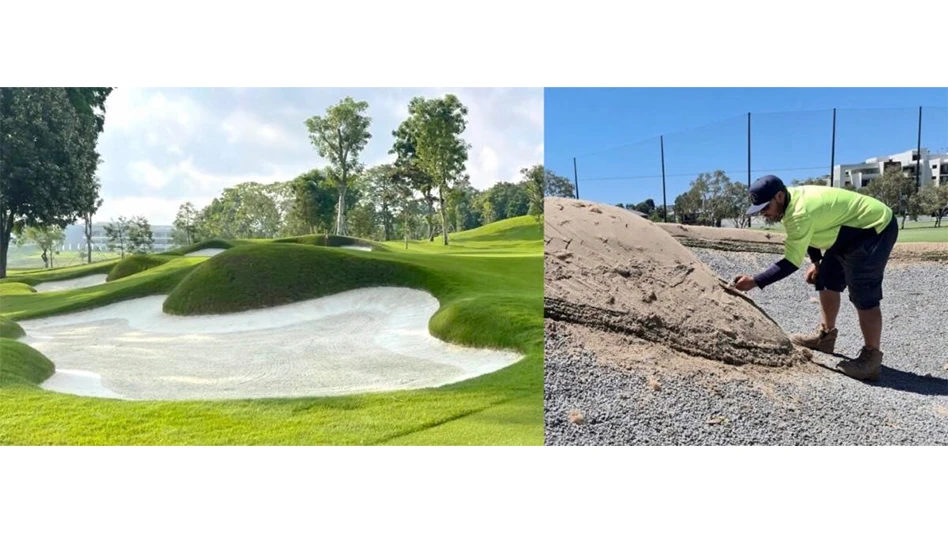
Dr. Haim B. Gunner is an Emeritus Professor of Environmental Sciences at the University of Massachusetts. His research interests have included studies in microbial ecology and the biological control of insect pests in plant disease. He is currently Chief Scientist of the Performance Nutrition Division of LidoChem, Inc. Here, he offers some thoughts about bionutrients and their importance to golf course turf health. Sponsored Content Digital marketing can feel overwhelming when you’re working with a limited budget. Websites, SEO, social media, and paid ads can quickly add up, but you don’t need to do everything to see results. By focusing on cost-effective strategies, you can still make a big impact without overspending. Sponsored Content Digital marketing can feel overwhelming when you’re working with a limited budget. Websites, SEO, social media, and paid ads can quickly add up, but you don’t need to do everything to see results. By focusing on cost-effective strategies, you can still make a big impact without overspending. Sponsored Content Digital marketing can feel overwhelming when you’re working with a limited budget. Websites, SEO, social media, and paid ads can quickly add up, but you don’t need to do everything to see results. By focusing on cost-effective strategies, you can still make a big impact without overspending. Sponsored Content Digital marketing can feel overwhelming when you’re working with a limited budget. Websites, SEO, social media, and paid ads can quickly add up, but you don’t need to do everything to see results. By focusing on cost-effective strategies, you can still make a big impact without overspending. Sponsored Content Digital marketing can feel overwhelming when you’re working with a limited budget. Websites, SEO, social media, and paid ads can quickly add up, but you don’t need to do everything to see results. By focusing on cost-effective strategies, you can still make a big impact without overspending.
In what ways can bionutrients/stimulants help protect turf this year, especially considering the challenging weather some areas of the country experienced this winter?
Bionutrients can best help protect turf against the detrimental impact of stressful environmental conditions, such as drought and water stress, by incorporating them into a systematic program of stress tolerance. The goal of such a program should be to remedy conditions such as poor or imbalanced turf nutrition, low C.E.C. (cation exchange capacity), poor soil quality, and diminished microbial populations that could make turf vulnerable to extreme weather conditions. Microbial bionutrients play a significant role in this system of stress reduction. This system should also include components such as seaweed extract, humate derivatives and amino acids, among others, so that they can work to combat the impact of climatic extremes.
What are the most important things superintendents can do with bionutrients this summer to build up and protect their turf through the summer weather and into the fall?
The superintendent should do everything to support the major driver of the turf ecosystem, which is the soil microbial population and its organic substrates. Providing bionutrients and stimulants will enhance early root and shoot development as well as optimum nutrient uptake.
Have bionutrient products proven to be effective in hot weather?
Where drought is anticipated, amino acids, seaweed extract, humates, and mycorrhizae may serve to increase root development in order to help reduce heat and drought stress.
Can you tell me about some of the most exciting developments in bionutrition/stimulants during the past few years?
The most important development has been the ability to use bionutrition in a reliable system. There have been some exciting products, which not only supply turf nutrition but build a more sustainable soil and reduces nitrate runoff into the water supply.
Of course, the genetic transformations of turf strains and their potential resistance to disease and environmental stress (which will result in increased efficiency of bionutrients/stimulants) are also pretty exciting.
Lawn and Landscape Marketing on a Budget
Lawn and Landscape Marketing on a Budget
Lawn and Landscape Marketing on a Budget
Lawn and Landscape Marketing on a Budget
Lawn and Landscape Marketing on a Budget
Bionutrients/stimulants will be integrated into an ecosystem management approach in which they will be applied in a program designed to correlate soil environment, major nutrients, microclimate and water regimen.
Are there certain areas of the country where bionutrients/stimulants would be more of a help to turf than in other areas?
The application of bionutrients/stimulants can be customized to respond to the needs of diverse turf environments: Areas of low rainfall and arid soils, such as in the Southwest, soils of limited organic matter and soils with saline contamination, would all be particular beneficiaries of bionutrient/stimulant applications.
Get curated news on YOUR industry.
Enter your email to receive our newsletters.Latest from Golf Course Industry
- Toro continues support of National Mayor’s Challenge for Water Conservation
- A different kind of long distance
- Golf Construction Conversations: Stephen Hope
- EnP welcomes new sales manager
- DLF opening centers in Oregon, Ontario
- Buffalo Turbine unveils battery-powered debris blower
- Beyond the Page 66: Keep looking up
- SePRO hires new technical specialist






